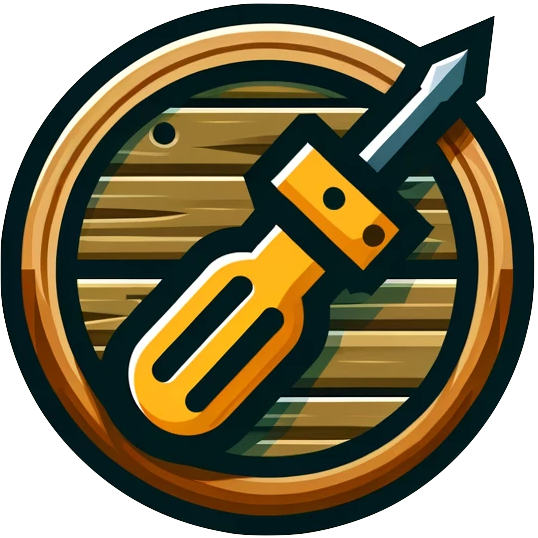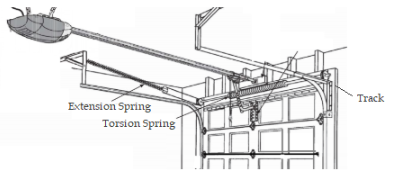When it comes to garage door spring systems, there are two main types that you need to consider: garage door torsion spring systems and garage door extension spring systems. These two systems play a crucial role in the smooth operation and functionality of your garage door.
Understanding the differences between these two types of spring systems is vital for every homeowner.
Understanding the Basics: Garage Door Spring Systems
Garage door spring systems are an essential component of any garage door. They are responsible for counterbalancing the weight of the door, making it easier to open and close. Without a properly functioning spring system, your garage door may become difficult to operate or even pose a safety risk.
There are two main types of garage door spring systems: torsion spring systems and extension spring systems.
Torsion spring systems utilize a tightly wound spring that is mounted horizontally above the garage door opening. When the door is closed, the spring is under tension, storing energy. As the door is opened, the spring unwinds, releasing its stored energy and assisting in lifting the door. When the door is closed, the spring rewinds, storing energy for the next opening cycle.
On the other hand, extension spring systems use two springs that are mounted vertically on both sides of the garage door tracks. These springs stretch and contract as the door is opened and closed. When the door is closed, the extension springs are fully stretched, and as the door is opened, they contract to help lift the door.
Both torsion and extension spring systems have their own advantages and considerations when it comes to installation, maintenance, and safety. It's important to understand these differences in order to choose the right system for your garage door.
Torsion Spring Systems
How Torsion Spring Systems Work
Torsion spring systems operate on the principle of torque. The tightly wound spring is installed on a shaft above the garage door opening. When the door is closed, the spring is under tension, storing energy. As the door is opened, the spring unwinds, releasing its stored energy, which assists in lifting the door. When the door is closed again, the spring rewinds, storing energy for the next opening cycle.
The force provided by torsion springs is more concentrated and evenly distributed, resulting in smoother and more controlled door movement. This makes torsion spring systems ideal for heavier garage doors or doors with multiple panels.
Pros and Cons of Torsion Spring Systems
Pros:
Durability: Torsion springs are designed to last longer than extension springs, as they are less prone to wear and tear.
Balance and Control: Torsion springs provide a more balanced and controlled movement of the garage door, reducing the risk of sudden jerks or imbalances.
Space Efficiency: Torsion springs are installed horizontally above the door, making them a space-saving option compared to extension springs.
Safety: Torsion spring systems are generally considered safer than extension springs, as they are enclosed in a metal tube, reducing the risk of accidents or injuries.
Cons:
Installation Complexity: Installing or replacing torsion springs requires specialized knowledge and tools, making it a more complicated process compared to extension springs.
Cost: Torsion spring systems tend to be more expensive upfront compared to extension springs, although they offer better longevity.
Common Issues and How to Solve Them
While torsion spring systems are known for their durability, they can still experience issues over time. Some common problems include:
Spring Fatigue: Torsion springs may weaken or lose their tension over time, leading to difficulties in opening or closing the door. This can be solved by adjusting the tension or replacing the springs.
Rust and Corrosion: Exposure to moisture and harsh weather conditions can cause the springs to rust or corrode. Regular lubrication and maintenance can help prevent this issue.
Spring Breakage: Although rare, torsion springs can break due to excessive wear or structural failure. Broken springs should be replaced immediately by a professional technician.
Extension Spring Systems
How Extension Spring Systems Work
Extension spring systems operate by stretching and contracting to assist in opening and closing the garage door. These springs are typically installed on both sides of the door and are attached to pulleys and cables. When the door is closed, the extension springs are fully stretched, storing energy. As the door is opened, the springs contract, using their stored energy to help lift the door.
Unlike torsion springs, extension springs do not require a shaft or tube for their operation. Instead, they rely on the tension created by their stretching and contracting motion to provide the necessary force to open and close the door.
Pros and Cons of Extension Spring Systems
Pros:
Cost: Extension spring systems are generally more affordable compared to torsion spring systems, making them a popular choice for homeowners on a budget.
Ease of Installation: Installing or replacing extension springs is relatively straightforward and can be done by homeowners with basic DIY skills.
Availability: Extension springs are widely available and come in various sizes and lengths, making them easy to find and replace.
Cons:
Limited Lifespan: Extension springs tend to have a shorter lifespan compared to torsion springs and may require more frequent replacement due to wear and tear.
Imbalance Issues: Extension springs can sometimes cause an imbalance in the garage door if not properly adjusted or maintained, leading to uneven door movement.
Safety Concerns: Unlike torsion springs, extension springs are not enclosed in a metal tube, which increases the risk of accidents or injuries if a spring were to break.
Common Issues and How to Solve Them
While extension spring systems are generally reliable, they can experience certain issues over time. Some common problems include:
Spring Stretching: Over time, extension springs can lose their tension and stretch, resulting in a weak or unbalanced garage door. Adjusting the tension or replacing the springs can solve this issue.
Spring Breakage: Extension springs can break if they become worn out or if they are subjected to excessive force. Broken springs should be replaced promptly by a professional technician.
Cable or Pulley Problems: The cables and pulleys that work in conjunction with extension springs can also experience wear and tear. Regular inspection and maintenance can help identify and address these issues.
How to Choose Between Torsion and Extension Spring Systems
Considerations for Choosing the Right System
Weight and Size of the Door: Torsion spring systems are generally recommended for heavier garage doors, while extension spring systems are suitable for lighter doors. Consider the weight and size of your door to determine which system can provide the necessary force to open and close it effectively.
Available Space: Torsion spring systems require horizontal space above the door for installation, while extension spring systems require vertical space on both sides of the door. Evaluate the available space in your garage to determine which system is more feasible for installation.
Personal Preference: Some homeowners may have a personal preference for one system over the other based on factors such as ease of maintenance, perceived safety, or past experience. Consider your own preferences and comfort level when making a decision.
Professional Advice: Consulting with a professional garage door technician can provide valuable insights and recommendations based on your specific garage door requirements. They can assess the door's weight, size, and other factors to guide you towards the most suitable spring system.
Cost Comparison between Torsion and Extension Spring Systems
Cost is an important consideration for many homeowners. While torsion spring systems often have a higher upfront cost due to the complexity of installation and specialized components, they tend to have a longer lifespan and may require fewer replacements over time. Extension spring systems, on the other hand, are generally more affordable initially but may incur additional costs for more frequent replacements.
When comparing costs, it's essential to consider the long-term investment and potential savings of each system. Additionally, factor in the cost of professional installation if you choose a torsion spring system, as it typically requires specialized knowledge and tools.
Safety Comparison between Torsion and Extension Spring Systems
Safety is a paramount concern when it comes to garage doors. While both torsion and extension spring systems can be safe when properly installed and maintained, there are some differences in terms of inherent safety features.
Torsion spring systems are generally considered safer because the springs are enclosed in a metal tube, reducing the risk of accidents or injuries if a spring were to break. Extension springs, on the other hand, are exposed and can present a higher risk of injury if they break under tension.
Regardless of the system you choose, it is crucial to prioritize regular maintenance, inspections, and safety precautions to ensure the safe operation of your garage door.
In the next section, we will discuss essential maintenance tasks for your garage door spring system, signs that indicate your springs need attention, and when it's best to call a professional for assistance.
Conclusion
In conclusion, understanding the differences between garage door torsion and extension spring systems is crucial for homeowners looking to make informed decisions about their garage doors. Both systems have their own advantages and considerations, and it's important to weigh these factors based on your specific needs and preferences.
Torsion spring systems offer durability, balance, and control, making them suitable for heavier garage doors. They require professional installation and come with a higher upfront cost but offer long-term reliability and safety.
On the other hand, extension spring systems are more affordable and easier to install, making them a popular choice for lighter garage doors. However, they have a shorter lifespan and may require more frequent replacements. They also come with some safety considerations due to the exposed nature of the springs.
When choosing between torsion and extension spring systems, consider factors such as the weight and size of your garage door, available space, personal preference, and professional advice. An assessment of costs, both upfront and long-term, is also crucial.
Proper maintenance of your garage door spring system is essential for its optimal performance and longevity. Routine tasks such as lubrication, visual inspections, balance tests, and safety sensor checks should be performed regularly. Pay attention to signs that indicate your spring system needs attention, such as noisy operation, difficulty opening or closing, uneven door movement, or sagging cables.
While homeowners can handle routine maintenance tasks, it is important to call a professional technician for complex repairs, significant damage, or any situation where you are unsure about performing maintenance or adjustments yourself.
By understanding the mechanics, pros and cons, and maintenance requirements of torsion and extension spring systems, you are equipped to make the right choice for your garage door. Remember to prioritize safety, regular maintenance, and professional assistance when needed.
We hope this comprehensive guide has provided you with valuable insights and guidance in navigating the world of garage door spring systems. Make an informed choice, maintain your system properly, and enjoy the convenience and reliability of your garage door for years to come.

